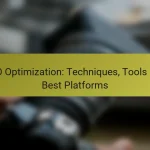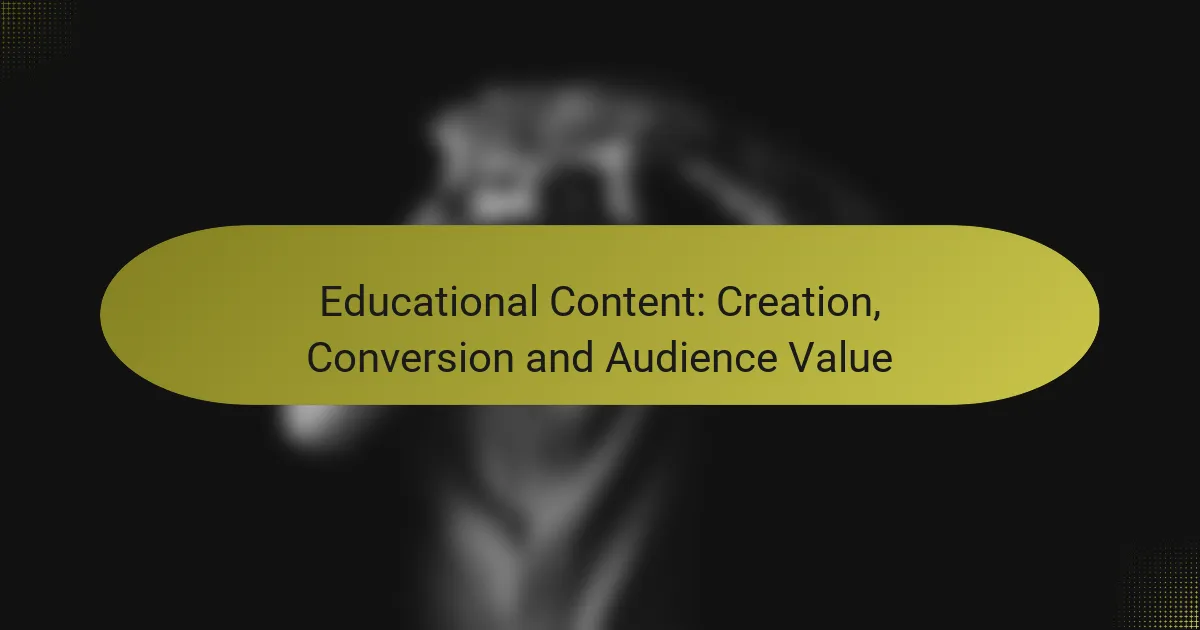Optimizing video length is essential for maximizing engagement and viewer retention, as it varies by platform and audience preferences. While shorter videos can quickly capture attention, longer formats allow for more comprehensive content, appealing to those seeking detailed insights. Finding the right balance between brevity and depth is crucial for maintaining viewer interest and minimizing drop-off rates.

What is the optimal video length for engagement?
The optimal video length for engagement varies depending on the platform and audience preferences. Generally, shorter videos tend to capture attention quickly, while longer videos can provide more in-depth content, appealing to viewers seeking detailed information.
Short-form videos (under 2 minutes)
Short-form videos, typically lasting under 2 minutes, are ideal for quick messaging and capturing immediate attention. They are particularly effective on social media platforms where users scroll rapidly and prefer concise content.
To maximize engagement, focus on delivering a clear message or story right from the start. Use eye-catching visuals and strong calls to action to encourage interaction.
Medium-length videos (2 to 5 minutes)
Medium-length videos, ranging from 2 to 5 minutes, strike a balance between brevity and depth. This length allows for more detailed explanations while still maintaining viewer interest.
Consider using this format for tutorials, product demonstrations, or storytelling that requires a bit more context. Keep the pacing brisk and ensure that every second adds value to the viewer’s experience.
Long-form videos (over 5 minutes)
Long-form videos, which exceed 5 minutes, are suitable for comprehensive content such as in-depth tutorials, interviews, or documentaries. These videos can foster a deeper connection with the audience, as they often provide more substantial insights.
When creating long-form content, maintain viewer retention by structuring the video with clear sections and engaging visuals. Regularly check viewer analytics to identify drop-off points and adjust future content accordingly.

How does video length affect viewer retention?
Video length significantly impacts viewer retention, as longer videos tend to see higher drop-off rates. Striking the right balance between content depth and duration is crucial for keeping viewers engaged throughout the entire video.
Impact of length on viewer drop-off rates
Viewer drop-off rates typically increase as video length extends beyond a certain point. For instance, videos under five minutes often retain a larger percentage of viewers compared to those that exceed ten minutes. Understanding your audience’s preferences can help tailor video lengths to minimize drop-offs.
Common pitfalls include creating overly lengthy content that lacks engaging elements. Aim for concise, focused videos that deliver value quickly to maintain viewer interest and reduce the likelihood of abandonment.
Correlation between length and audience engagement
There is a notable correlation between video length and audience engagement, with shorter videos often yielding higher interaction rates. For example, content that lasts between two to five minutes typically garners more likes, shares, and comments than longer formats.
However, longer videos can foster deeper engagement if they provide substantial value, such as detailed tutorials or comprehensive storytelling. Consider your target audience’s preferences and the type of content you are producing to determine the optimal length for engagement.

What strategies can optimize video length?
To optimize video length, focus on creating engaging content that maintains viewer interest while delivering your message effectively. Striking the right balance between brevity and depth can enhance viewer retention and overall engagement.
Content pacing techniques
Effective content pacing involves structuring your video to maintain viewer interest throughout. Use techniques such as varying your tone, incorporating visuals, and breaking up information into digestible segments. Aim for a rhythm that keeps the audience engaged without overwhelming them.
Consider using hooks at the beginning to capture attention, followed by a mix of fast-paced segments and slower, more detailed explanations. A typical range for engaging video length is between 5 to 15 minutes, depending on the topic complexity.
Audience analysis for length adjustment
Understanding your audience is crucial for optimizing video length. Analyze viewer demographics, preferences, and viewing habits to tailor your content accordingly. For instance, younger audiences may prefer shorter, more dynamic videos, while older viewers might appreciate more in-depth discussions.
Utilize surveys or feedback forms to gather insights on viewer expectations regarding video length. Adjust your content strategy based on this data, aiming for a length that resonates with your target audience, typically between 8 to 12 minutes for general topics.
Testing and analytics tools
Utilize testing and analytics tools to evaluate the effectiveness of your video length. Platforms like YouTube Analytics provide data on viewer retention, drop-off points, and engagement rates, helping you identify optimal video lengths for your content.
Experiment with different lengths and formats, then analyze the results to determine what works best. Regularly review performance metrics and adjust your strategy as needed, ensuring that your videos remain engaging and relevant to your audience’s preferences.

What are the best practices for video length in marketing?
Optimal video length in marketing varies based on audience preferences and platform specifics, but generally, shorter videos tend to engage viewers more effectively. Aim for concise content that delivers value quickly, typically within a few minutes, to maximize viewer retention and engagement.
Industry benchmarks for video length
Industry benchmarks suggest that videos between 30 seconds to 2 minutes perform well for most marketing purposes. Shorter videos, around 30-60 seconds, are ideal for social media ads, while longer formats, up to 2 minutes, can be effective for product demos or storytelling. Understanding your audience’s attention span is crucial in determining the right length.
For example, explainer videos often thrive around the 1-2 minute mark, as they provide enough time to convey essential information without losing viewer interest. Regularly reviewing performance metrics can help refine your video length strategy.
Platform-specific length recommendations
Different platforms have unique recommendations for video length that can significantly impact engagement. For instance, Instagram and TikTok favor videos under 60 seconds, while YouTube allows for longer content, with 7-15 minutes being a common range for tutorials and vlogs. Adhering to these guidelines can enhance visibility and viewer interaction.
Additionally, consider the context of your content. For Facebook, videos that are 1-2 minutes long often achieve the best results, while LinkedIn users may engage more with professional content that runs 2-3 minutes. Tailoring your video length to each platform’s audience can lead to better retention and engagement rates.

How can I measure the effectiveness of video length?
To measure the effectiveness of video length, focus on viewer engagement and retention metrics. These metrics provide insight into how well your video length aligns with audience preferences and content goals.
Key performance indicators (KPIs)
Key performance indicators for video length include average watch time, audience retention rate, and click-through rate (CTR). Average watch time indicates how long viewers stay engaged, while audience retention rate shows the percentage of viewers who watch the video to the end.
For example, a video with an average watch time of several minutes and a retention rate above 50% is generally considered effective. A low CTR may suggest that the video length is not enticing enough for viewers to click on it.
Tools for tracking viewer engagement
Several tools can help track viewer engagement effectively. YouTube Analytics provides detailed insights into watch time and retention, while Google Analytics can track traffic sources and user behavior on your website.
Other tools like Vidyard and Wistia offer advanced analytics features, including heatmaps that show where viewers drop off. Using these tools can help you identify optimal video lengths and improve content strategy based on viewer behavior.

What are the emerging trends in video length optimization?
Emerging trends in video length optimization focus on balancing viewer engagement with content delivery. Shorter videos are gaining traction, driven by audience preferences for quick consumption, while longer formats still hold value for in-depth storytelling.
Influence of TikTok and short-form content
TikTok has revolutionized video consumption by popularizing short-form content, typically lasting between 15 seconds to 3 minutes. This shift has led creators across platforms to experiment with brevity, aiming to capture attention quickly and maintain viewer interest.
As a result, brands and marketers are increasingly adopting shorter video formats to engage audiences effectively. Content that is concise and visually appealing tends to perform better, as viewers often prefer quick, digestible information over lengthy presentations.
To optimize video length, consider testing various durations to find what resonates with your audience. Aim for videos that are under two minutes for promotional content, while educational or tutorial videos can extend to five minutes if they provide substantial value. Always analyze viewer retention metrics to refine your strategy.










